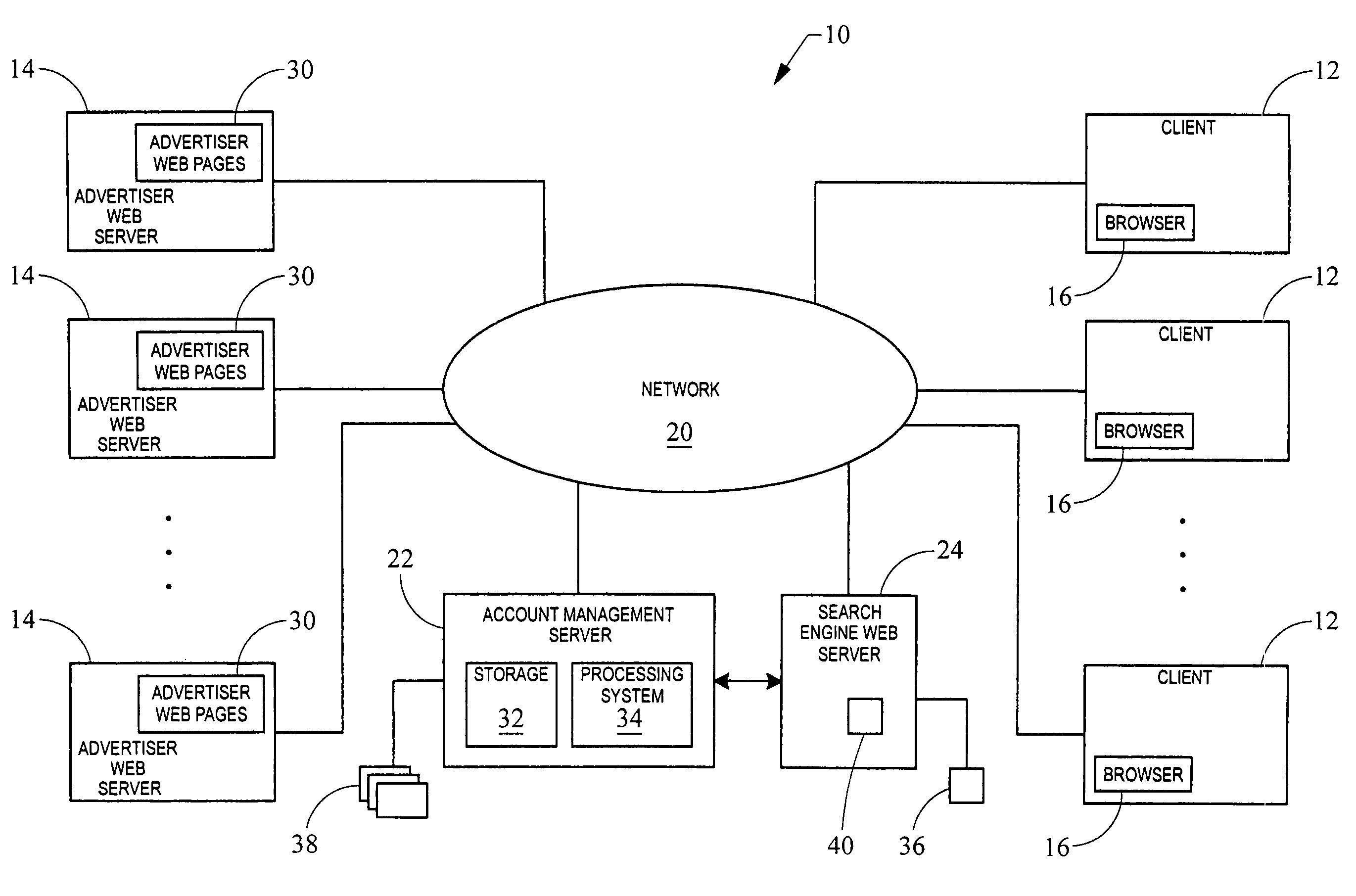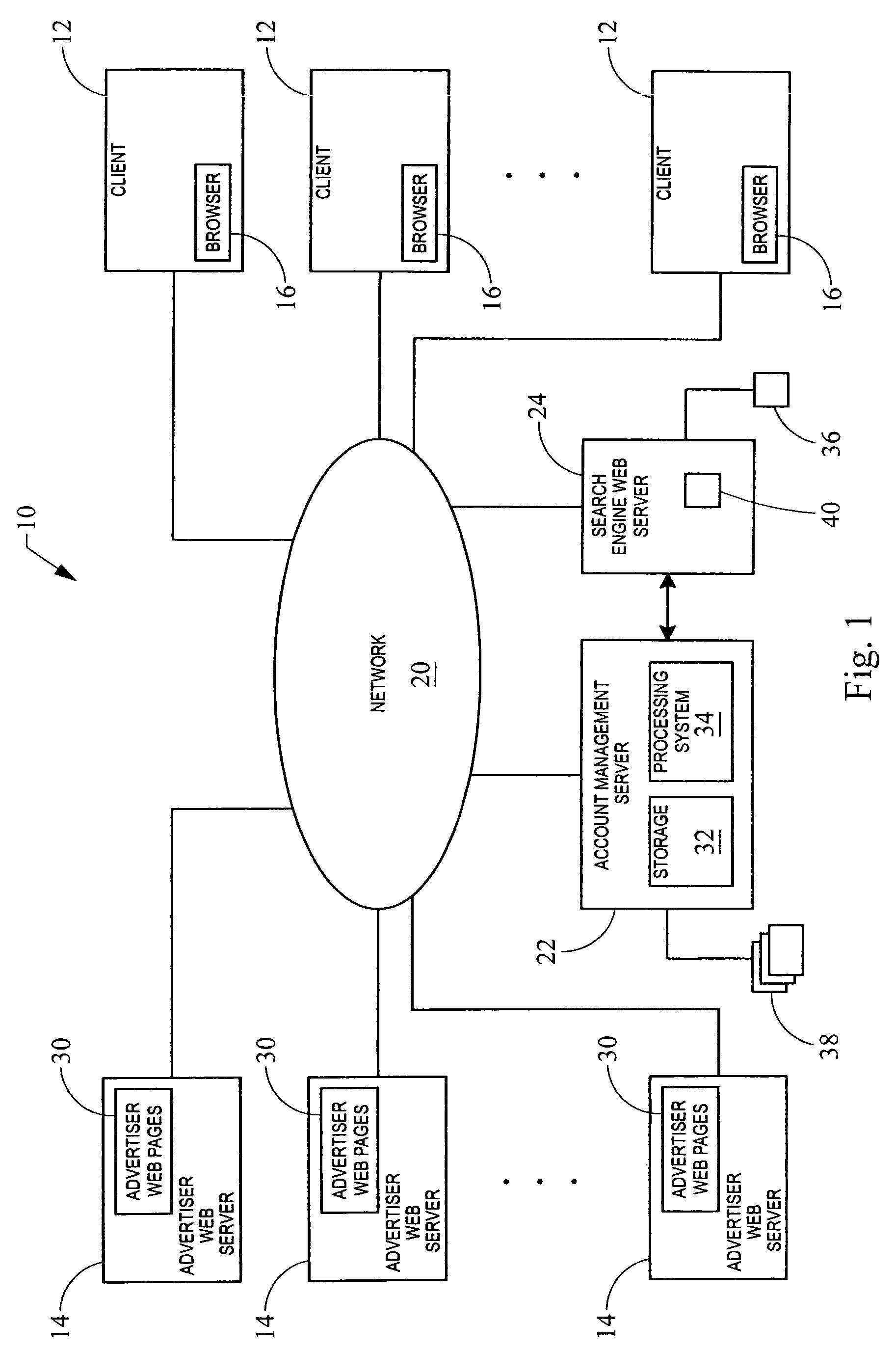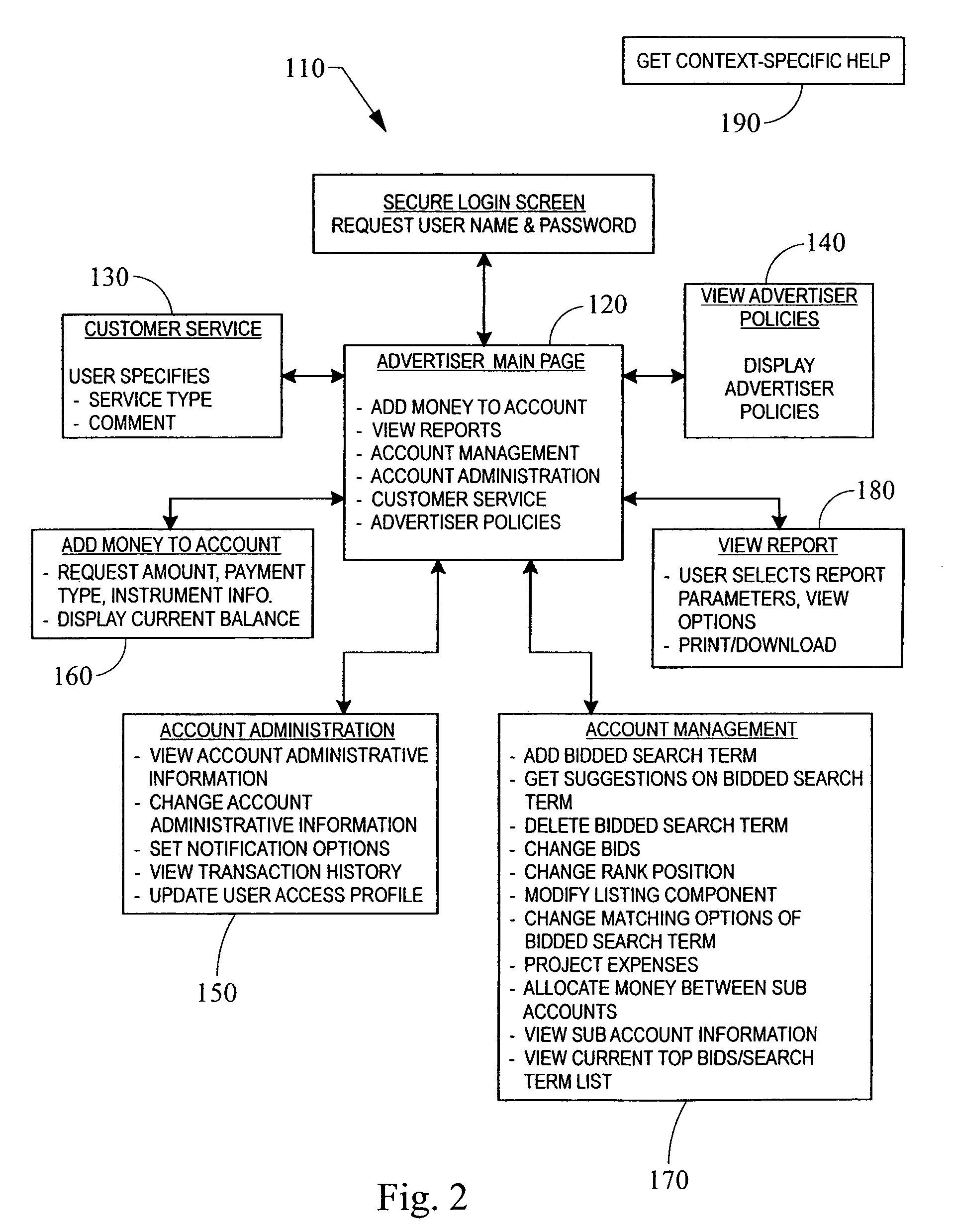System and method for enabling multi-element bidding for influencing a position on a search result list generated by a computer network search engine
a search engine and multi-element technology, applied in the field of system and method, can solve the problem that conventional internet search engines do not provide a way for web site promoters, and achieve the effect of less control
- Summary
- Abstract
- Description
- Claims
- Application Information
AI Technical Summary
Benefits of technology
Problems solved by technology
Method used
Image
Examples
first embodiment
[0038]Referring now to the drawings, FIG. 1 is an example of a distributed system 10 configured as client / server architecture used in a A “client” is a member of a class or group that uses the services of another class or group to which it is not related. In the context of a computer network, such as the Internet, a client is a process (i.e. roughly a program or task) that requests a service which is provided by another process, known as a server program. The client process uses the requested service without having to know any working details about the other server program or the server itself. In networked systems, a client process usually runs on a computer that accesses shared network resources provided by another computer running a corresponding server process. However, it should also be noted that it is possible for the client process and the server process to run on the same computer.
[0039]A “server” is typically a remote computer system that is accessible over a communicatio...
second embodiment
[0049]In a second embodiment, the bid by an advertiser comprises a set of money amounts that are deducted from the account of the advertiser for each time certain types of referrals to that advertiser occur. Preferentially, the types of referrals available to the advertiser to be bid upon would comprise impression, click-through, and a limited set of types of advertiser-defined actions. The limited set may comprise two types of actions. In that case, a multi-element bid would comprise four elements—specifically, the money amounts that are deducted, respectively, upon the occurrence of an impression referral, a click-through referral, a first action referral, and a second action referral. Because the web sites of two different advertisers can be very different in purpose, and because a particular advertiser could have very different purposes underlying two different advertising campaigns, it is preferred that the first and second action elements of the bid be advertiser-defined. For ...
PUM
 Login to View More
Login to View More Abstract
Description
Claims
Application Information
 Login to View More
Login to View More - R&D
- Intellectual Property
- Life Sciences
- Materials
- Tech Scout
- Unparalleled Data Quality
- Higher Quality Content
- 60% Fewer Hallucinations
Browse by: Latest US Patents, China's latest patents, Technical Efficacy Thesaurus, Application Domain, Technology Topic, Popular Technical Reports.
© 2025 PatSnap. All rights reserved.Legal|Privacy policy|Modern Slavery Act Transparency Statement|Sitemap|About US| Contact US: help@patsnap.com



